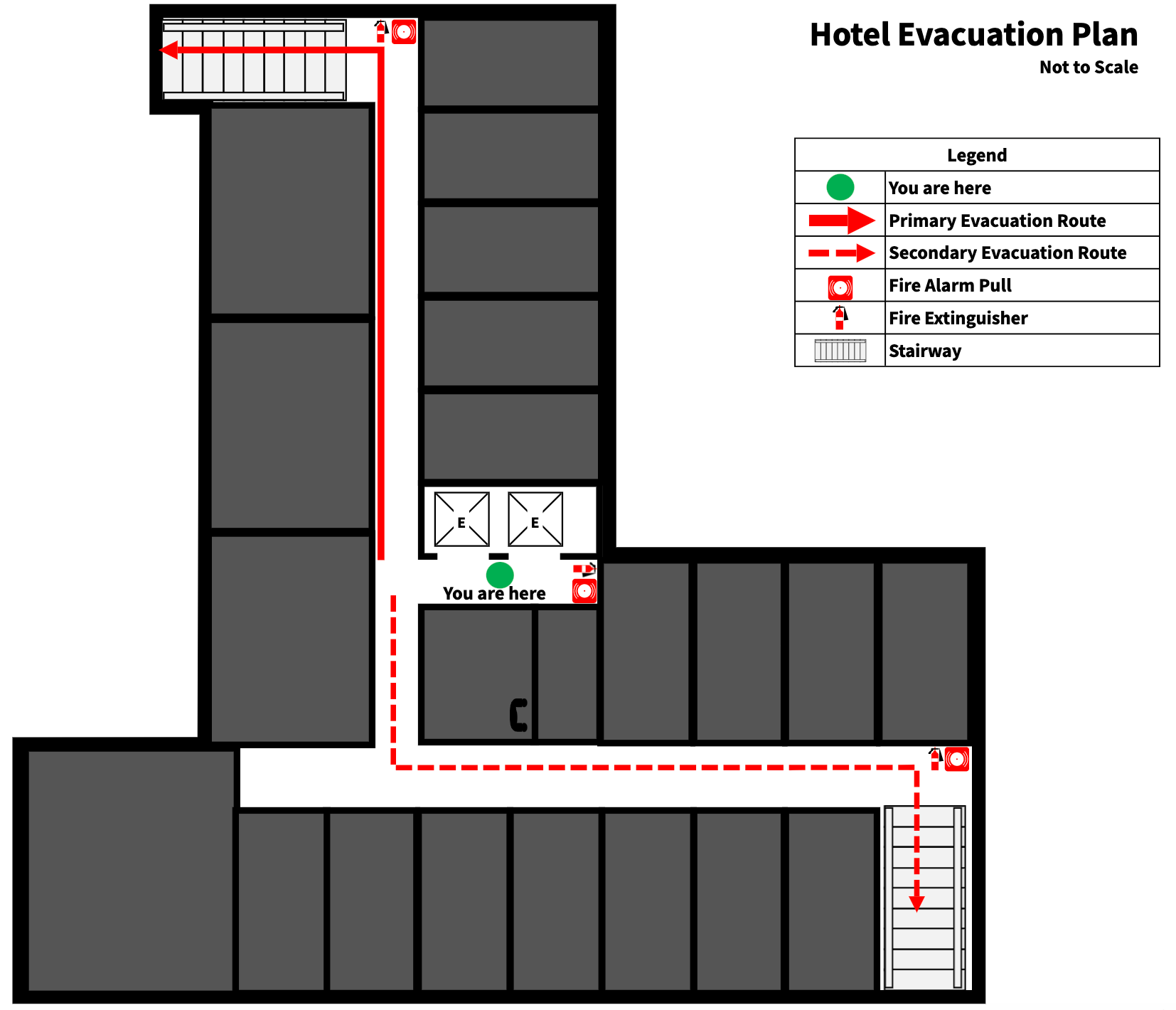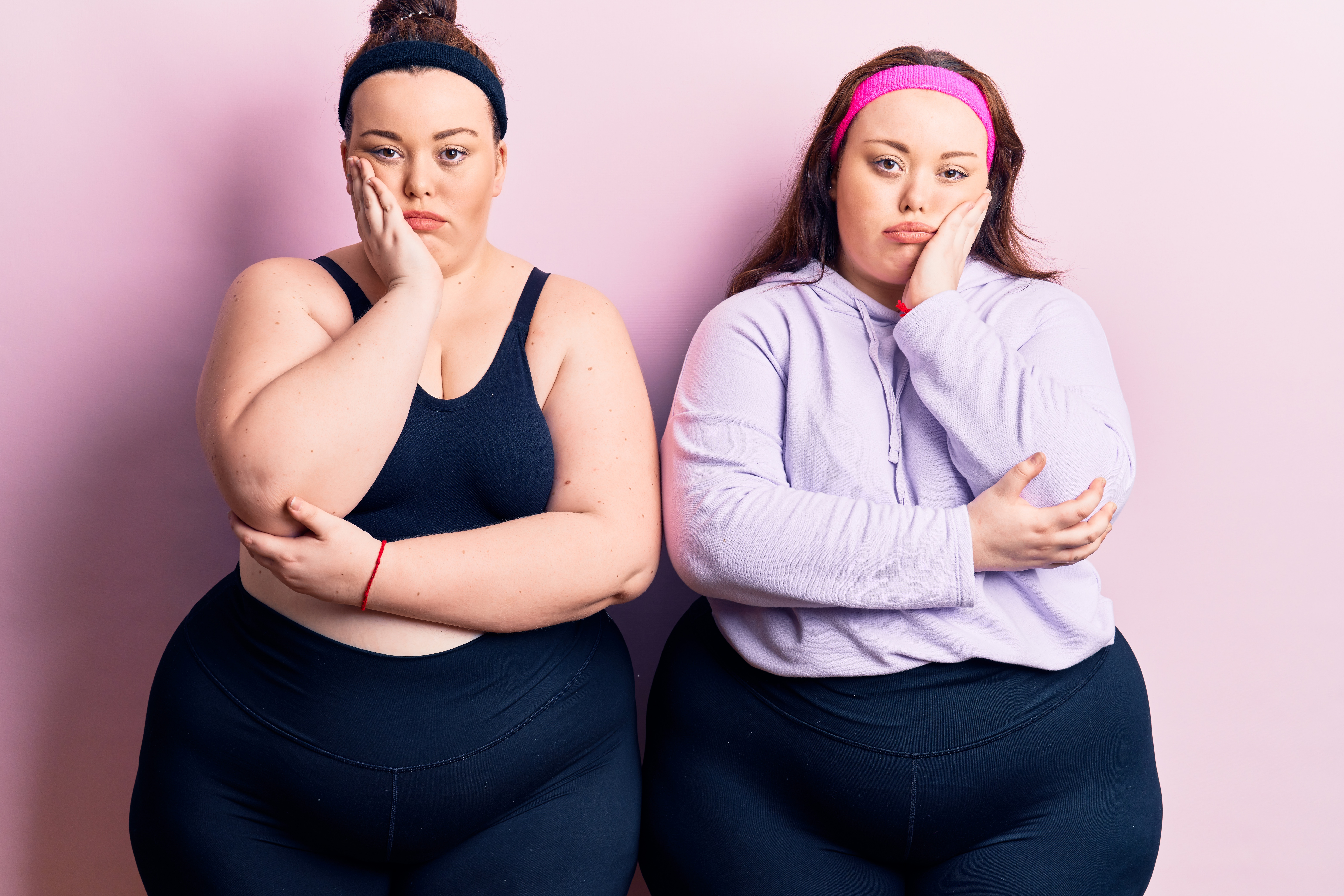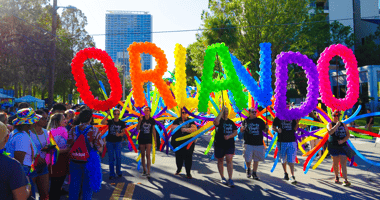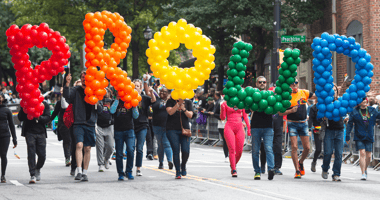If you've spent any time in a plus size body, or if you know and love someone who is a person of size, you're already familiar with the well-intentioned comments and critiques lobbed every which way in the name of "safety" and "concern." Things like, "Have you tried eliminating sugar from your diet? I'm worried about your health," and "Don't you think we should make morning yoga mandatory at the office? I'm concerned about the weight Rachel has put on," are real things said to real people all the time, meant to show care, but (intentionally or not) oftentimes degrading relationships instead.
Although these are sometimes delivered by people we know with love, care, and respect, they can often feel condescending and out of touch, especially if the person making such comments is a stranger. The truth is that living at a higher weight can make people feel uncomfortable, and express that discomfort through veiled "concerns for safety" or "worries about health." It's more about them than the person of size.
The reality, however, is that there ARE modifications plus size folks should take to stay safe. They're just not the ones people talk about. According to the Centers for Disease Control and Prevention as of 2013, plus size drivers are 80% more likely to die in a car accident than drivers who are not considered plus size. At the time, assistant professor and deputy director for the Center for Applied Biomechanics Jason Kerrigan even admitted, "We don’t understand enough about the nature of [plus size bodies] to know why it makes the situation worse."
When I looked into this a little deeper, I found even in reports mentioning this fatality rate in 2020 did not yield any results- meaning we have no more information than we did a decade ago.
While we may not be much closer to answers, there are still things we can take into our own hands to make sure safety comes first and foremost. I'm a plus size woman and I've personally experienced the need for all of the things on this list, so I hope my knowledge can be helpful to you.
1. Seat Belts
Did you know seat belts can be shorter in the back seat than the front seats? If you're playing passenger and often party it up back there, you may find the seat belt is extremely tight to your body, or even impossible to click shut. Instead of taking a risk and just telling your friends to drive super safe, consider buying a seat belt extender. I bought my own at seatbeltextenderpros.com and it's been a game-changer for sure. And hey, belt extenders are not just for people of size: those with injuries to the shoulders or seniors who cannot reach back as far as they used to can benefit from these. 
Keep in mind that all cars are different, and this seller knows that. It's helpful to have the car make, model, and year handy, as well as which seat you need the buckle for, since restraints are not the same across every vehicle or even every seat inside.
2. Airplane Seat Belt Extenders
Yes, another seat belt safety tip, but they're important! If you're a traveler by plane, you know that they're already small and uncomfortable to be in, sometimes even if you're upgraded to a fancy first class. All major airlines are eager and willing to provide you with a seat belt extender to make your trip more comfortable and, above all, safe. When boarding the plane you just have to ask the attendant for a belt, and they will hand you one, either once seated or on your way in, depending on loading procedures.
Many people may try to buy their own airplane seat belt extenders on Amazon or other retailers, but unlike with cars, it's important NOT to buy your own airline seat belt and bring it to the flight! Airplanes are a whole other breed, and only the aircraft carrier can create reliable and trustworthy belt extenders with any rate of trustworthiness. (Not only that, but who wants to spend money on this when a flight is already crazy expensive?!)
3. Evacuation and Emergency Routes
This one is going to require some cooperation: plus size individuals are not often consulted or considered when people plan emergency procedures like evacuation routes. Some hallways and stairs can be downright impossible for a larger body to navigate. Try testing out the evacuation route or accessing the emergency supply stock in advance if possible to ensure equal access for your body.
 Make sure to talk to the people in daily risk situations, like at your place of employment, about what you can do if the evacuation or emergency plan isn't suitable for your body. It may feel uncomfortable for both you and those you speak to, but it is crucial and nobody should deny you access to emergency planning. Nobody anticipates a disaster when it strikes, which is why planning ahead is so important.
Make sure to talk to the people in daily risk situations, like at your place of employment, about what you can do if the evacuation or emergency plan isn't suitable for your body. It may feel uncomfortable for both you and those you speak to, but it is crucial and nobody should deny you access to emergency planning. Nobody anticipates a disaster when it strikes, which is why planning ahead is so important.
Additionally, The Americans with Disabilities Act provides legal backup when it comes to accommodations for emergency procedures. While the ADA does not explicitly cover people of size, you may also find that its wording covers the challenges you may face in mobility and access which can help you if your employer won't.
4. High Capacity or Wide Bore MRI Machines
When it comes to healthcare, everyone knows there is still a long way to go to make the space accessible and fair for people of size. However, one immediate and urgent concern includes important medical testing equipment such as MRI machines.
MRI (Magnetic Resonance Imaging) is one common and safe way to take pictures of the inside of your body. These machines, however, are often built to look like a cylinder or a donut, meaning they are enclosed and narrow spaces which larger bodies won't fit inside of. This isn't even about comfort, it's about life-saving safety: people of size who do not get an MRI due to the width or depth of their bodies risk delaying test results which may indicate serious problems like cancer and disease of internal organs like the brain or heart.
The traditional size of an MRI machine opening (called an MRI "bore") is 60 centimeters or 24.6 inches wide. "Wide bore" machines usually extend to 70 centimeters, and it can have a big impact on the comfort of even patients who are not plus size. Even better are "open" MRI machines, which have a top and bottom, but have sometimes up to 25 feet of space side-to-side, meaning you're not enclosed at all.
There are also more rare machines, like the new open upright MRI, which have less discomfort, claustrophobia, and size restriction, and MRI machines specifically for single limbs called extremity MRI machines, so the whole body doesn't need to be involved.
While medicine still has advancements to make, and open MRI machines may not deliver the highest quality of images, it's important to know that getting a test in even the least "clear" machine is better than not testing at all, and no person of size should have to forego critical care; but one of the main obstacles in getting what care we do have access to is actually finding those machines.
There is no publicly accessible national or universal database of all available high capacity MRI machines. This means you'll have to hunt down a wide bore or open MRI yourself, since sometimes, not even your doctor will know where one is located. In fact, some hospitals don't even have the ability to treat plus size patients in the event they need an emergency MRI because they are not equipped with a high-capacity machine, and every minute someone spends on the phone trying to find one is a precious 60 seconds of time a plus size patient goes without potentially life-saving diagnosis.
Friendly Like Me is trying to change that, but we need your help: if you know where high capacity MRI machines exist, like the open or wide-bore models, find your imaging center, hospital, emergency room or other medical facility in our app and let others know that they won't be abandoned in a time of crisis.

.jpg)


